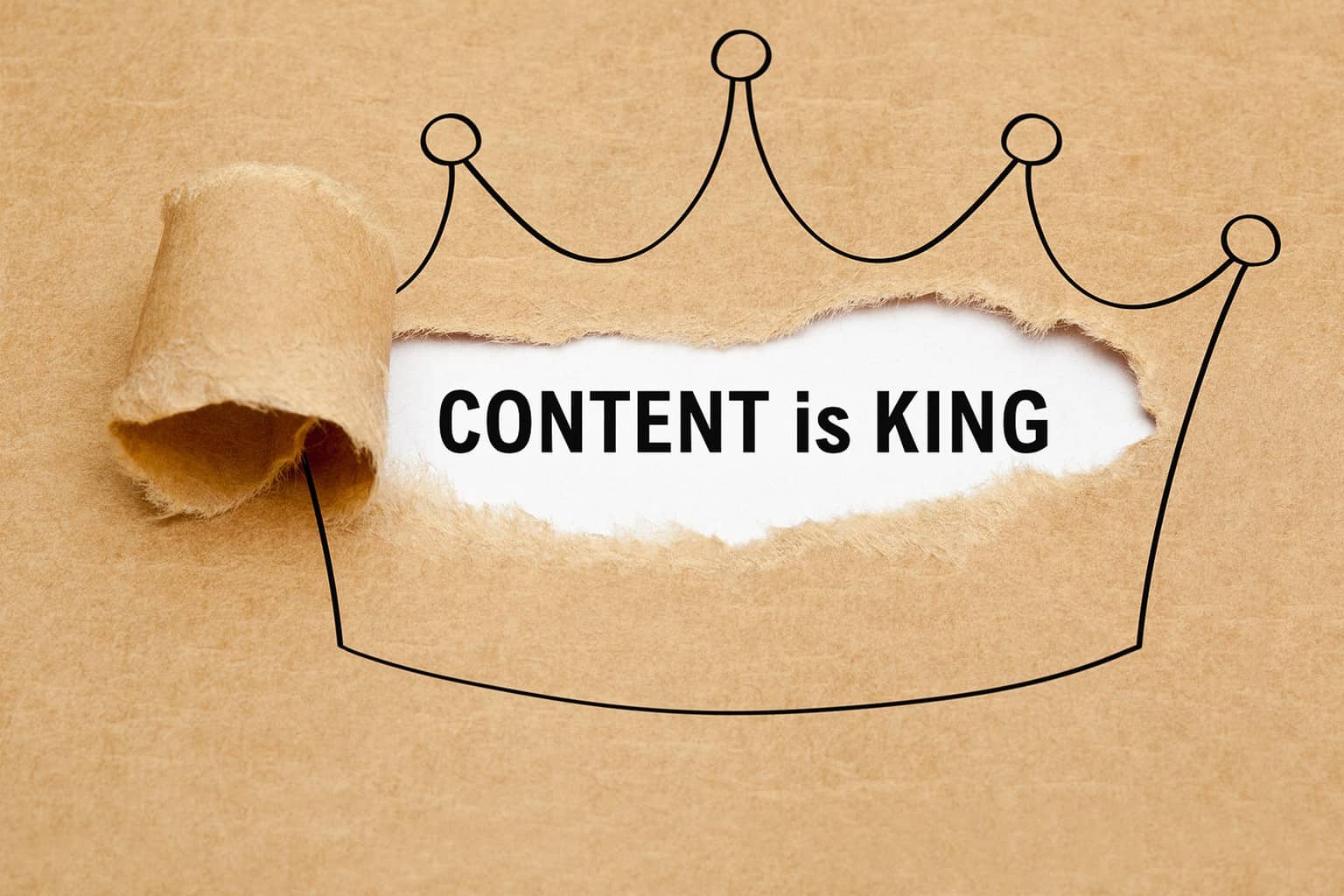It’s been declared time and again that content is “king.” And digital marketers have come to understand the value that content can bring in creating brand awareness, driving leads, and retaining customers.
But some financial services firms still struggle with making content marketing a priority. Here is why content is vital for your brand’s digital marketing strategy and some of the ways you can use it to elevate your message and boost your bottom-line results.
What is Content Marketing?
Content marketing is a form of inbound marketing in which your financial services company develops content that is useful and relevant to its target audience with several goals in mind:
- Building brand awareness
- Generating qualified leads
- Nurturing the trust of prospects
- Increasing conversion and retention rates
Content marketing won’t necessarily be used to directly pitch your various products and services. Instead, your focus should be on addressing the various pain points that your target audience has with genuinely engaging and helpful content.
Is Content “King” for Financial Services Companies? The Stats Don’t Lie.
Content marketing works, no matter what industry you’re in or the audience you’re targeting.
According to data from the latest B2B Content Marketing Trends Report by the Content Marketing Institute (CMI), roughly 70% of content marketers say their firm’s content strategy is more successful than it was just a year ago.
HubSpot reports that 70% of marketers are also actively investing in content marketing. But, is content marketing working for these companies? According to figures from a recent Content Preferences Survey, these efforts are quite effective.
- 71% of B2B buyers say they consume blog content prior to and during a purchase.
- 64% of consumers surveyed claim they value webinars in the mid-stage of their buying journey.
- 40% of consumers admitted that they viewed 3-5 pieces of content before reaching out to a salesperson.
Why Financial Marketers Should Embrace Content
Banking and financial services aren’t the same as they were a decade or just a few short years ago. Consumer behavior and preferences have shifted, and companies need to meet their audience wherever they’re at, meaning content marketing can play a starring role in your strategy.
If your business continues to wait for prospects to arrive at its website and click on “Apply Here” or “Open an Account” buttons, the wait could be a long one. Other institutions are doing much more to adapt to the new environment by investing in a robust content marketing program.
Some of the reasons for this include:
It gives you a non-promotional and organic way to reach customers.
Consumers are increasingly turned off by and suspicious of “salesy” messages. Instead of pushing your visitors to do one thing or another, you can build trust by providing non-promotional material that helps them solve their problems, or at least understand them better. With enough of this type of content, you’ll begin to establish your brand as an authority, and consumers will come to you first when they’re ready to buy.
It is the best way to reach millennials and younger generations.
According to Nielsen data, millennials are now the largest generation in the U.S., and this group spends more time on their mobile devices than they do on TV or radio. Banks are more likely to reach these current and potential customers online with engaging content than they are with a costly commercial.
It provides a way to deliver a more personalized and targeted message.
Consumers increasingly want a more personalized experience, and they’re willing to pay for it. One study revealed that personalization by brands across more channels could increase spending by consumers by as much as 500%.
You can capitalize on personalization with content marketing by creating buyers personas and then producing content for those groups. For example, you might have retirement or mortgage tips for baby boomers and a different set of content aimed at millennials.
It gives you a way to educate your audience.
Similar to any other business, your firm likely deals with some of the same sales objections from potential clients. Maybe customers are reluctant to trust a bank that does most of its business online, or perhaps they’re concerned about your level of digital security.
Content provides an excellent way to address these common objections with educational material and compelling reasons why your brand has thought these matters through. You can include images, video, and even testimonial clips of customers that have had similar concerns but ended up having an exceptional experience.
5 Types of Content for Financial Services Firms
Now that you know the value of content marketing for your bank or credit union, what should you post? There are a ton of ways to get your message out there. Here are five types of content you can put on your list:
1. Blog Posts
Blog posts are the most common form of content marketing, and they are incredibly effective. Why? First, they’re relatively inexpensive to produce, so you can achieve an excellent ROI. They are also a great way to improve your site’s SEO and drive traffic.
2. Video
Video is becoming a favorite content medium among younger audiences. Even across all demographics, video is particularly useful if you need to explain complex topics or ideas. For example, some of your site’s visitors may not want to read a blog post about reverse mortgages, but they don’t mind watching a video about the subject.
3. Podcasts
Consumers increasingly enjoy podcasts because they can be consumed on the go. They are an ideal content platform for financial services companies to showcase interviews with industry experts. You might even consider creating a regularly-scheduled show on a particular topic, such as saving money or qualifying for a mortgage.
4. Social Media Posts
Social media posts are a form of content. Engaging on sites like Facebook, Twitter, and Instagram is an effective way to reach audiences that spend a good deal of time on these platforms. Some examples of social media content for financial brands include:
- Actionable finance tips
- Latest industry news
- Relevant images
- Behind the scenes of your organization
- Occasional memes, provided they are appropriate
5. E-Books & White Papers
E-books and white papers are long-form content that is generally available for download. In many cases, you’ll want to use these as opt-in incentives to collect the email addresses of prospects. This type of content is useful to demonstrate your authority through research and the detailed explanation of various topics.
6 Content Marketing Tips for Financial Services Companies
Content marketing isn’t new, but financial marketers still struggle to keep pace with other industries that are taking advantage of the latest trends in content creation. This is particularly the case with smaller banks and credit unions that may be losing market share to bigger players that have larger marketing budgets.
The good news is that you don’t need to have a massive budget to be successful with content marketing for financial services; just the right approach. Here are several content marketing tips that can help elevate your message and help you reach more potential and current clients.
1. Build Detailed Buyer Personas.
If you want your digital marketing campaign to be successful, you should have a clear picture of who you’re targeting. Buyer personas identify the characteristics of your different buyer groups as well as their needs, challenges, and interests.
You’ll want to create fictional profiles for each group of ideal customers. Build out those profiles relative to demographics, pain points, and other relevant information that can help direct your marketing efforts.
2. Create Content That Meets Each Personas’ Challenges and Needs
You should have financial services content that speaks to each buyer personas’ challenges and needs. For example, a millennial might have different requirements and questions about an online checking account than a baby boomer.
3. Focus on Each Stage of the Buyer’s Journey
In addition to having content that speaks to different personas, you’ll want to create content that is appropriate to each stage of the buyer’s journey. As prospects go through the process of learning about your company, investigating its products, and making a decision, you can have the right content available to help.
Here are some formats that are typically useful at each stage:
Awareness Stage
- Blogs
- Videos
- Checklists
- Ebooks
Consideration Stage
- Webinars
- White papers
- Product specs
- Case studies
Decision Stage
- Demos
- Testimonials
- Proof of concepts
- Vendor/product comparisons
4. Become a Financial Services Industry Thought Leader
Consumers looking for financial information want to hear from someone with authority. The decisions they’re making can be complex and have far-reaching consequences, so this makes sense.
You can set yourself apart and become a go-to source by posting informative, engaging, and helpful content. It’s also beneficial if other sites syndicate your content, giving you an extra boost.
5. Make Your Content SEO-Friendly
Any content you produce and post should be SEO-friendly, meaning the search engines will love it and favor you with positive organic rankings. You can accomplish this by paying close attention to your:
- Keyword selection and use
- Meta descriptions and page tags
- Title tags
- Image optimization
- Choice of links
- Page speed
6. Plan Out a Strategic Content Calendar
Once you begin forming a list of some potential topics in your head, it’s time to formalize that process with a content calendar. Your calendar will plan out your content strategy with respect to topics, keyword selection, target audience, and deadlines. You can use a simple spreadsheet or an online tool to produce and manage your calendar.
How Banks.com Can Help Showcase Your Financial Services Brand
Quality content is an excellent tool for building brand awareness, growing traffic, and educating your audience. Consumers have questions, and your brand could be the one that provides the best and most timely answers.
Banks.com can help your organization increase its engagement and brand awareness with its Content Syndication and Sponsored Content services. You can showcase your own content and get valuable backlinks to your website as well as outrank competitors in organic search.
Contact us to learn more about how a partnership with Banks.com can help your financial services company maximize the value of its digital marketing strategies.







